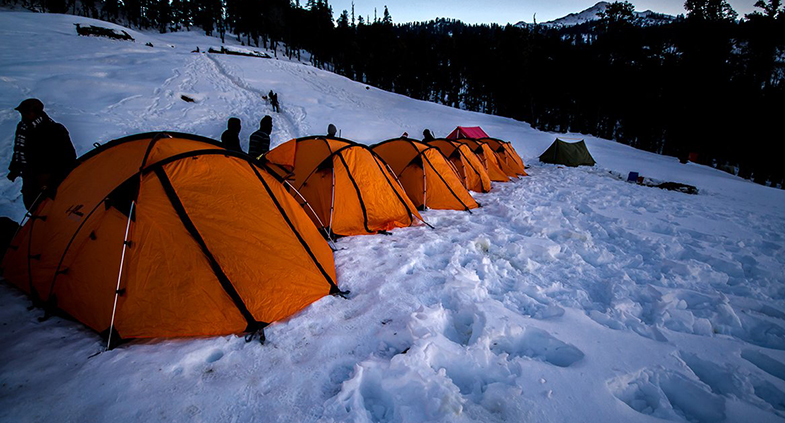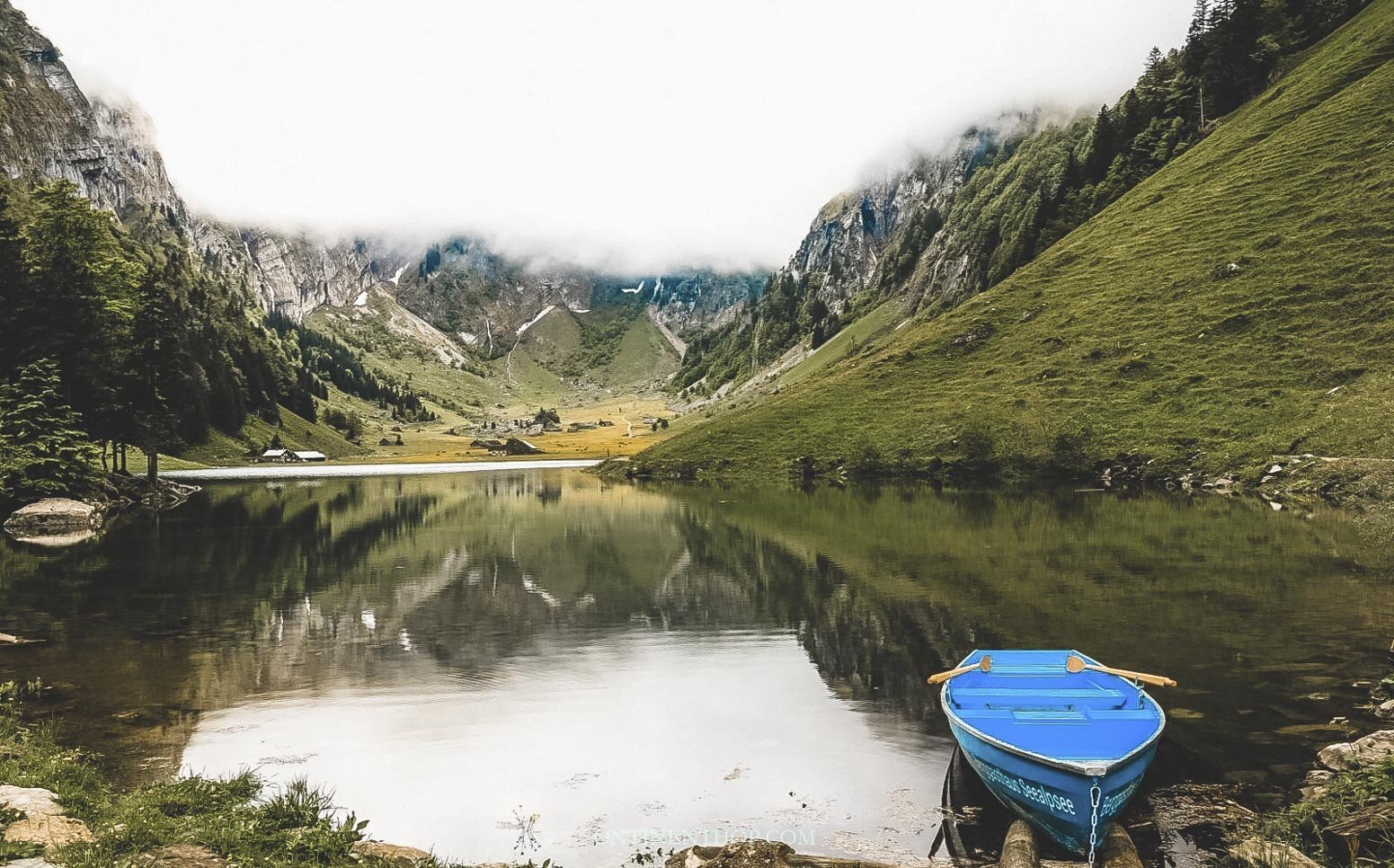Introduction
Peak is frequently cited as the top snow-trekking location in the world. It is encircled by pine trees and covered in the gorgeous whiteness of snow. This mountain pass in Uttarakhand is located at a height of 12,500 feet above sea level, and the journey there presents a variety of difficulties for travelers.
This winter snow trip is undoubtedly for you if you wish to enjoy a fantastic hike while experiencing nature at its best. You will travel through stunningly beautiful scenery, lush forests, pastures, and snow footprints as you make your way down the trail.
You must be aware that the Kedarkantha Trek Summit is located within the Uttarkashi-based Govind Wildlife National Sanctuary Park. This stunning hill is surrounded by several picturesque river basins. This valley, also known as the upper valley of Garhwal, is home to numerous lonely villages where the locals have lived since the time of the Mahabharata.
Why it is the best winter snow trek?
Kedarkantha is regarded as the best winter snow trek in India; novices may participate in this Himalayan adventure that you must undertake at least once in your lifetime. From the first week of November to the final week of April, when there is the most snowfall, is the best time to do this journey.
The picturesque campsites along this route are all blanketed in snow by mid-November.
Even though each hike in the Himalayas is unique and renowned for its beauty. Trekking frequently allows you to experience a dose of nature that is unavailable in cities while also giving you the chance to push your physical and psychological limitations.
This walk is one of those in the Himalayas that makes you want to see nature’s splendor in its unadulterated state. It gives everything a trekker might want, from snow-capped mountains, verdant grasslands, frozen lakes, and a pleasant magnificent top.
The ideal season for the Kedarkantha Trek
The Kedarkantha Trek is one of the few treks in the Indian Himalayas that may be completed throughout the year, except in July and August, which are Uttarakhand’s wet months.
A summertime
This area experiences moderate summers. This is the time of day when nearby mountains may be seen.
While monsoon
If you want to go on this journey during the monsoon, there will be challenges. Landslides occur during the monsoon and cause road congestion.
Even though it may take some work, the vista of the Himalayan meadows will be worth every bit of it.
it is winter
The route is still coated with silver sheeting throughout the winter. The journey, therefore, takes on a majestic quality. This trip is the greatest Indian winter trek and is also quite thrilling throughout the winter. Since the temperature drops during the trip, make sure to pack your thick wool clothing.
Kedarkantha Summertime Temperature and Weather: April, May, and June
The best time to go sightseeing in Kedarkantha is during the summer months of April, May, and June when the weather is cool and pleasant. Kedarkantha’s current temperature is still between 6 and 20 degrees Celsius.
The Kedarkantha trip features stunning, verdant scenery covered in a wide variety of vibrant flowers during the summer. The last of the winter’s snow is said to be gone by the end of April, and the pathways are covered in entrancing greens.
May brings out Kedarkantha’s true summer appeal, making the area seem incredibly alluring with the pleasant aroma of the just blooming flowers permeating the air. The chance of rain is quite remote at this period, and the temperature is perfectly bearable.
At this time of year, the area is breathtakingly stunning, covered with beautiful green fields. In full bloom during June, the mountains’ summits are adorned with flowers that fill the entire valley in brilliant hues. Tourists may travel through the tall Pine and Oak trees at this time.
Daytime and Nighttime Average Temperatures in the Summer –
During the summer, Kedarkantha maintains an average temperature of 6 degrees Celsius at night and 20 degrees Celsius during the day.
Temperature and weather conditions in Kedarkantha in July, August, and September
The Kedarkantha temperature often stays consistent at an average of around 12 degrees Celsius during the monsoon season, which also brings moderate to heavy rainfall to the valley. During this season, the area occasionally sees landslides, making trekking a challenge.
To experience the breathtaking monsoon panoramas of this magnificent valley, many adventure seekers, however, want to push the boundaries and walk to the summit. At this time, Kedarkantha’s weather is still dismal and rainy, but the area’s seductive vegetation has taken over the landscape.
In Kedarkantha, the monsoon season begins in July, and the trails start to get muddy. At this point, the deep blue sky completely darkens, and the steep Himalayas rise majestically in the background, giving the area a commanding appearance.
The towering Himalayas are shrouded in a blanket of gray clouds throughout August, which delivers Kedarkantha a fair amount of rain. In the area, a wide variety of vibrant flowers bloom, making them even more vibrant when little water droplets are scattered across their petals. The area experiences far less rain in September, and the weather is often gloomy and pleasant throughout this season.
Summertime average temperature, day and night
During the monsoon, Kedarkantha maintains an average temperature of 4 degrees Celsius at night and 17 degrees Celsius during the day.
Temperature and weather in Kedarkantha in the fall: October and November
The temperature at Kedarkantha stays between 0 and 15 degrees Celsius during the fall months of October and November, and the sky is usually always clear. The green leaves soon begin to dry out and fall off.
The lush meadows gradually go from green to brown, giving off a completely different appearance. Since the weather is still mild and the scenery gives breathtaking views of the Himalayas, this is the best time for beginners to try out trekking.
Kedarkantha is particularly alluring in October as countless types of vibrant flowers blossom there beneath the red sun. The winter months, which begin in November, call for inexperienced hikers. Tourists may climb while taking in the stunning vistas of the Himalayan mountains during this period when the temperature is still tolerable.
Summertime average temperature, day and night
In the fall, Kedarkantha’s typical temperatures are still approximately 15 degrees Celsius during the day and 2 degrees Celsius at night.
December, January, February, and March are the winter months with the coldest temperatures in Kedarkantha.
The Kedarkantha trip is at its finest in the winter, when a large number of trekkers from all over the world are welcomed. The temperature at Kedarkantha stays between -2 and 12 degrees Celsius throughout this period, and a thick layer of white snow blankets the area. The weather in Kedarkantha gets cold due to heavy snowfall. Every tourist is mesmerized by the area’s bizarre and dreamlike scenery.
In Kedarkantha, December heralds the start of the new snowy season. Due to the trek’s accessibility, a large number of people visit the area during this season and take strolls through the stunning natural surroundings while on the freshly fallen snow.
The area has significant snowfall in January, adding excitement to the hiking experience. The slopes are also the ideal location to go skiing at this time. Trekking is at its most exciting in February since snowfall is so likely.
The area receives little sunshine during the day during this month, while the Kedarkantha temperature drops significantly at night. The walk is still covered in snow in March, and hikers get to take in the mesmerizing vistas of the snow-capped Alps.
Summertime average temperature, day and night
In the winter, Kedarkantha’s typical temperatures are 10 degrees Celsius during the day and -2 degrees Celsius at night.
The best season and climate for the Kedarkantha Trek
Kedarkantha is freezing all year round, but the greatest season to climb the mountain is in the winter, specifically in December, January, February, and March, when the most snow falls. The area stays chilly throughout this period, with Kedarkantha’s temperature falling below freezing.
The area has regular, heavy snowfall, which makes the weather in Kedarkantha extremely frigid and damp. Although this makes walking a little more challenging, the excitement and adventure increase. During this time of the year, a large number of intermediate and experienced trekkers are drawn to Kedarkantha by the towering mountain routes covered with snow and breathtaking views.
The Kedarkantha winter trek provides adventure seekers with the ideal heart-pounding experience because of its difficult terrain.



